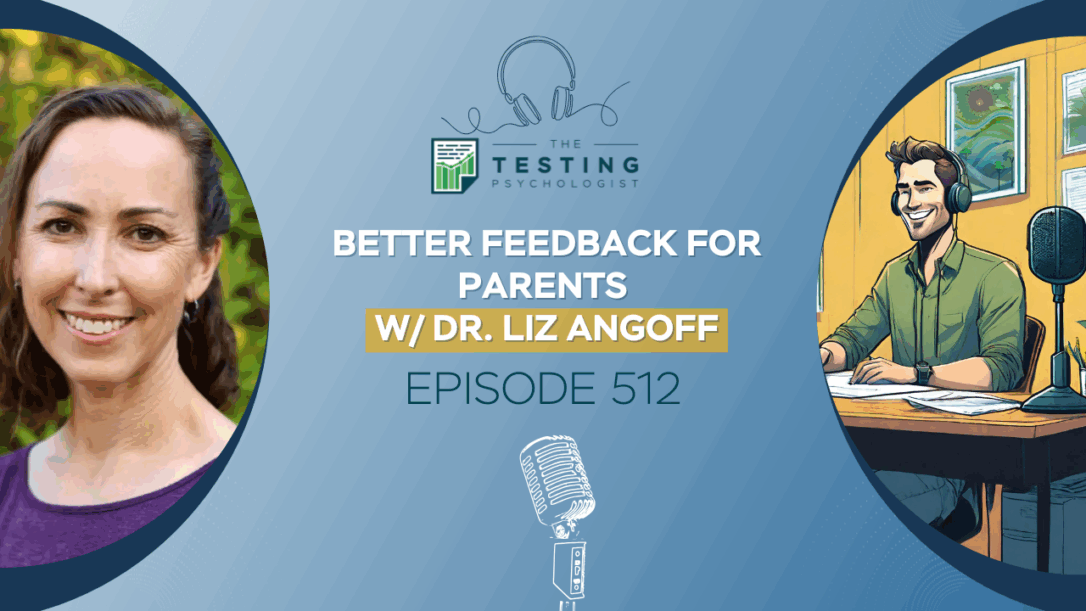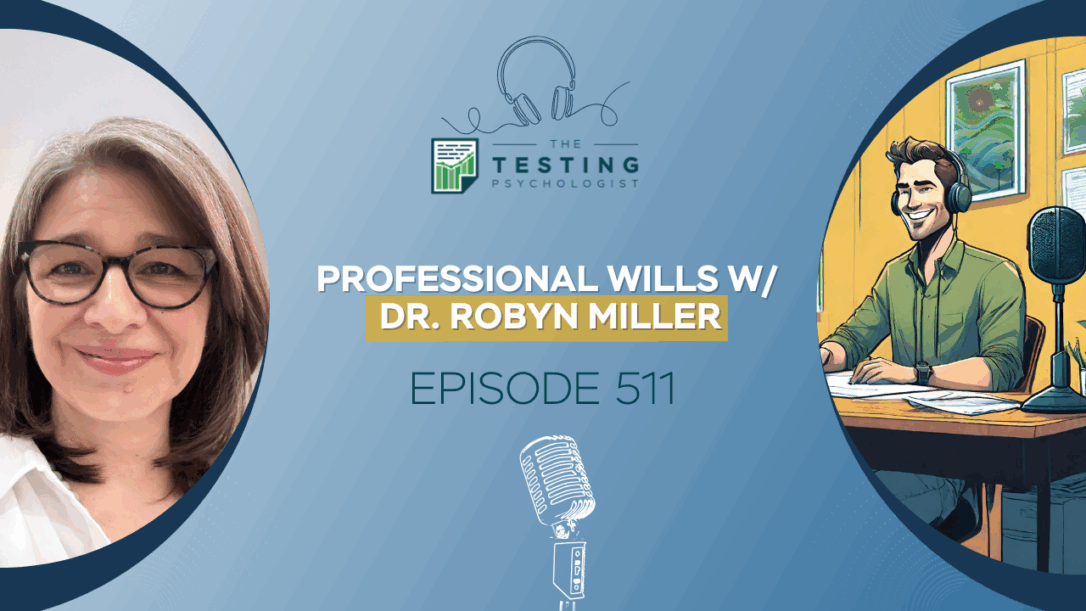[00:00:00] Dr. Sharp: Hello, everyone. Welcome to The Testing Psychologist podcast. I’m your host, Dr. Jeremy Sharp, licensed psychologist, group practice owner, and private practice coach. Many of y’all know that I have been using TherapyNotes as our practice EHR for over 10 years now. I’ve looked at others, and I just keep coming back to TherapyNotes because they do …
512. Better Feedback for Parents w/ Dr. Liz Angoff
Dr. Liz Angoff returns to dive deeply into the art and structure of feedback sessions with parents.
511 Transcript
[00:00:00] Dr. Sharp: Hello, everyone. Welcome to The Testing Psychologist podcast. I’m your host, Dr. Jeremy Sharp, licensed psychologist, group practice owner, and private practice coach. Many of y’all know that I have been using TherapyNotes as our practice EHR for over 10 years now. I’ve looked at others, and I just keep coming back to TherapyNotes because they do …
511. Professional Wills w/ Dr. Robyn Miller
In this powerful episode, I sit down with Dr. Robyn Miller to explore why every mental health practitioner needs a professional will.
510 Transcript
[00:00:00] Dr. Sharp: Hello, everyone. Welcome to The Testing Psychologist podcast. I’m your host, Dr. Jeremy Sharp, licensed psychologist, group practice owner, and private practice coach. This episode is brought to you by PAR. Psychologists need assessment tools for a more diverse population these days. PAR is helping by making many of their Spanish print forms available online through PARiConnect. …
510. Q-interactive vs. Q-global
In this episode, I dive into the often-confusing world of Pearson’s Q products—specifically Q-interactive and Q-global.
509 Transcript
[00:00:00] Dr. Sharp: Hello, everyone. Welcome to The Testing Psychologist podcast. I’m your host, Dr. Jeremy Sharp, licensed psychologist, group practice owner, and private practice coach. Many of y’all know that I have been using TherapyNotes as our practice EHR for over 10 years now. I’ve looked at others and I just keep coming back to TherapyNotes because they do …
509. “That” NYT Article on ADHD: Challenging Our Beliefs
In this episode, I dig into the widely discussed New York Times Magazine article, “Have We Been Thinking About ADHD All Wrong?”…
508 Transcript
Dr. Sharp: Hello, everyone. Welcome to The Testing Psychologist podcast. I’m your host, Dr. Jeremy Sharp, licensed psychologist, group practice owner, and private practice coach. Many of y’all know that I have been using TherapyNotes as our practice EHR for over 10 years now. I’ve looked at others, and I just keep coming back to TherapyNotes because they do it …
508. Leading from the Road w/ Dr. Tara Vossenkemper
In this episode, I sat down with my friend and returning guest, Dr. Tara Vossenkemper, for an honest and wide-ranging conversation about her family’s leap into full-time RV life…





